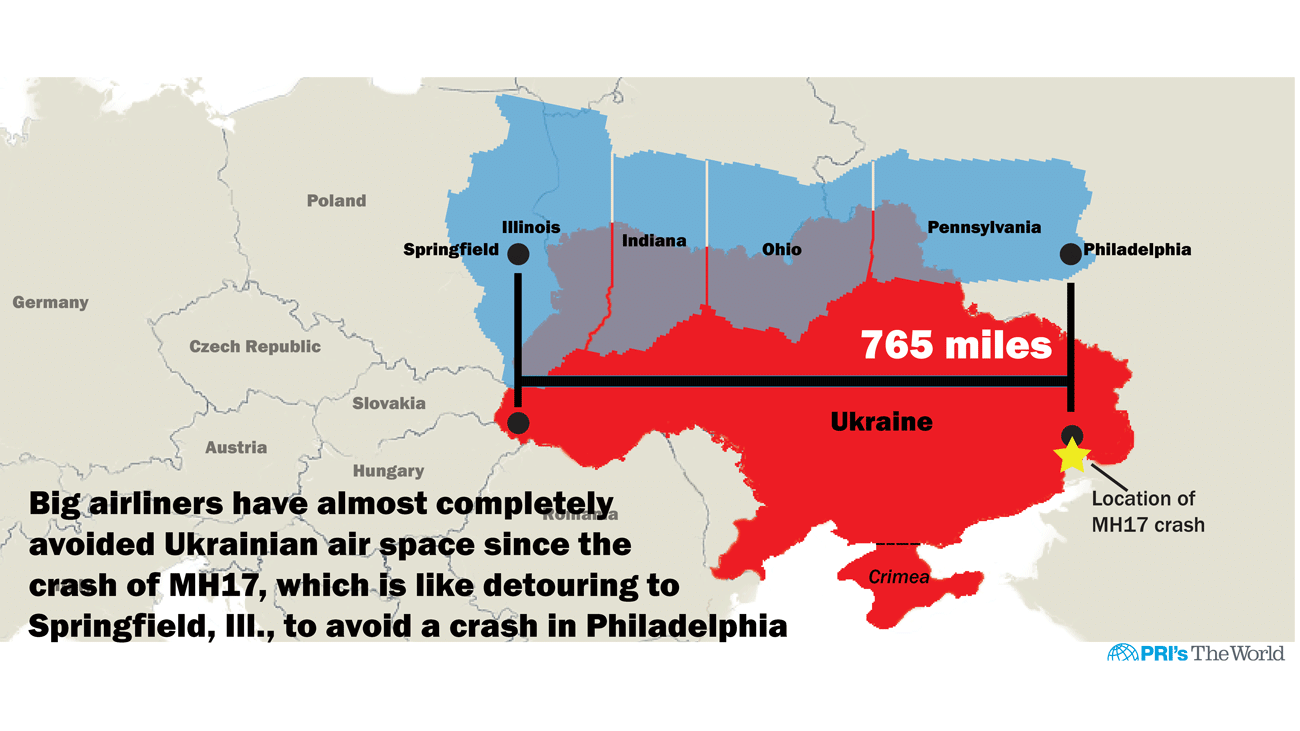Airlines face a major challenge flying around Ukraine — it’s huge
Flight paths have received increased attention this week, following the downing of Malaysia Airlines flight 17 over Ukraine last Thursday. So when a Malaysia Airlines plane from Kuala Lumpur to London re-routed to cross Syria, rather than Ukraine, last Sunday the change did not go unnoticed.
Howls from social media ultimately prompted the airline to try a new route. Eventually leading to a convoluted, though less controversial, flight path that bends to avoid both Syria and Ukraine, along with Iran.
The route across eastern Ukraine, flown by the downed Malaysian aircraft, was the most common route for flights between Europe and South East Asia, according to the European Cockpit Association (ECA), which represents more than 38,000 European pilots — meaning that scores of airliners are now trying out new routes.

A long detour around a warzone can cause delays and add extra fuel costs, however, and the UK's Civil Aviation Authority told the BBC, that airlines' decisions on flight patterns stem from a range of factors, including: Advice from the Foreign Office, warnings in the area, weather, navigation aids, strikes and which airports are out of action — but not necessarily conflicts on the ground.
It’s not unusual for planes to fly over hostile areas, airline pilot Patrick Smith told The World. People simply don’t realize that thousands of planes fly over such areas every day. “Really, that’s normal," Smith says.
Nevertheless, Malaysia Airlines and other major commercial airlines — including British Airways, Lufthansa and Air France — are finding routes that avoid Ukraine, a task that is far from simple. The eastern European country blankets an area of 233,062 square miles.
In other words, as the map illustrates, avoiding Ukraine is like detouring to Springfield, Illinois, to avoid a crash — 765 miles away — in Philadelphia.
Flight paths have received increased attention this week, following the downing of Malaysia Airlines flight 17 over Ukraine last Thursday. So when a Malaysia Airlines plane from Kuala Lumpur to London re-routed to cross Syria, rather than Ukraine, last Sunday the change did not go unnoticed.
Howls from social media ultimately prompted the airline to try a new route. Eventually leading to a convoluted, though less controversial, flight path that bends to avoid both Syria and Ukraine, along with Iran.
The route across eastern Ukraine, flown by the downed Malaysian aircraft, was the most common route for flights between Europe and South East Asia, according to the European Cockpit Association (ECA), which represents more than 38,000 European pilots — meaning that scores of airliners are now trying out new routes.

A long detour around a warzone can cause delays and add extra fuel costs, however, and the UK's Civil Aviation Authority told the BBC, that airlines' decisions on flight patterns stem from a range of factors, including: Advice from the Foreign Office, warnings in the area, weather, navigation aids, strikes and which airports are out of action — but not necessarily conflicts on the ground.
It’s not unusual for planes to fly over hostile areas, airline pilot Patrick Smith told The World. People simply don’t realize that thousands of planes fly over such areas every day. “Really, that’s normal," Smith says.
Nevertheless, Malaysia Airlines and other major commercial airlines — including British Airways, Lufthansa and Air France — are finding routes that avoid Ukraine, a task that is far from simple. The eastern European country blankets an area of 233,062 square miles.
In other words, as the map illustrates, avoiding Ukraine is like detouring to Springfield, Illinois, to avoid a crash — 765 miles away — in Philadelphia.
We want to hear your feedback so we can keep improving our website, theworld.org. Please fill out this quick survey and let us know your thoughts (your answers will be anonymous). Thanks for your time!
